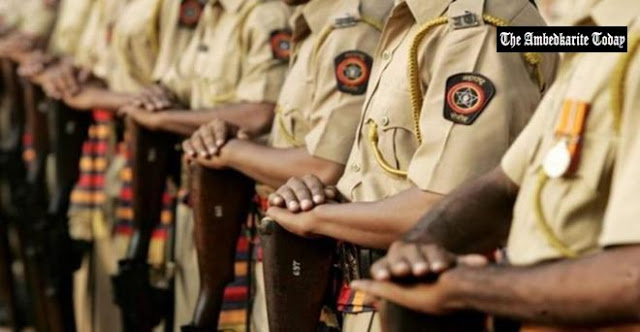According to the Common Cause-CSDS Lokniti’s ‘Status of Policing in India Report 2019’, while SCs are under represented in 19 out of 21 state police forces
Disadvantaged communities such as the Scheduled Castes (SCs), Scheduled Tribes(STs), Other Backwards Castes (OBCs) as well as women are under-represented in the country’s police force, a study has revealed. News18 has reported.
According to the Common Cause-CSDS Lokniti’s ‘Status of Policing in India Report 2019‘, while SCs are under-represented in 19 out of 21 state police forces studied in proportion to their share of reserved postings, STs and OBCs are inadequately represented in 16 and 11 states, respectively.
The report arrives at the figure by taking the actual percentage of SCs/STs/OBCs (2012-2016 average) in proportion to the reserved percentage of the respective communities in the state police force.
All three communities are poorly represented in Delhi – the only Union Territory included in the study.
In the case of women, their “representation…in the police force is even worse, with only 7.3 per cent women police personnel at the national level in 2016. None of the states have been able to meet the 33 per cent benchmark set out by the MHA, with Tamil Nadu having the highest representation of women at 12.9 per cent in 2016,” the report reads.
Representation of SCs in the state police forces ranges from 40.2 per cent (of the reserved sanctioned strength) in Uttar Pradesh to 101.8 per cent in Punjab. In fact, SCs are under-represented across Hindi-belt with four out of five poorest performing states – UP, Chhattisgarh, Haryana, West Bengal and Madhya Pradesh – belonging to the region.
Similarly, the ST representation across states ranges from 3.6 per cent in Haryana to 152.5 per cent in Uttarakhand. The OBC representation is the poorest in West Bengal with 22.6 per cent and best in Telangana with 145.3 per cent.
Officers Among Disadvantaged Communities
As per the report, which was released on Tuesday, while overall 13.4 per cent of the total police personnel are officers (assistant sub-inspector to deputy superintendent of police), only 11.5 per cent, 11.6 per cent, 11.1 per cent and 10.1 per cent of the SCs, STs, OBCs and women are of the officer rank.
The data for SCs, STs and OBCs is only available till the rank of DySP. Therefore, the percentage of officers among women in police and the overall police force has also been taken as the proportion of ASI to DySP to enable comparison across categories, the report highlighted.
“With the exception of five of the selected states (Assam, MP, Nagaland, Tamil Nadu and Uttarakhand), the proportion of women officers is consistently lower than the overall proportion of officers in all States,” the report noted, adding that “women are least likely to be posted at the officer level, compared to other categories of personnel.”
More than one-third of the states studied have disproportionately lower number of officers across all four categories. For instance, in Delhi the overall number of officers is 20.6 per cent whereas only four per cent of the OBCs are officers. Similarly, in West Bengal, nearly 13 per cent of the STs and OBCs were of the officer rank while the overall figures stood at 23.8 per cent.
Overall, states are performing poorly on the diversity indicator. Not only are there high vacancies in the sanctioned posts of SC, ST, OBC and women personnel, even among those who have been recruited, the chances of SCs, STs, OBCs and women being recruited at or promoted to the officer-level are lower than the chances of a general personnel being posted or recruited at the officer rank, the study observed.
Meanwhile, the data on representation of Muslims, who are not covered under any reservation, was discontinued by the National Crime Records Bureau (NCRB) after 2013.

